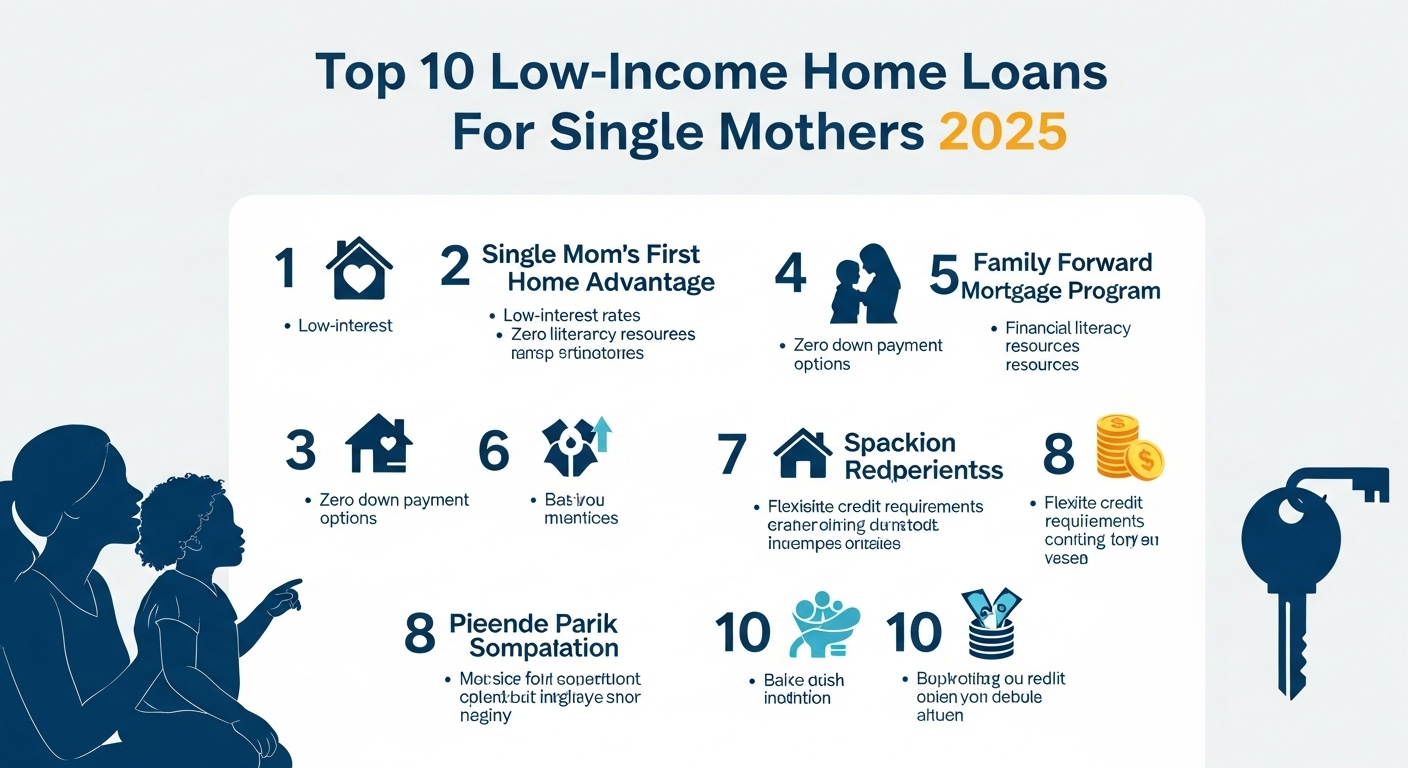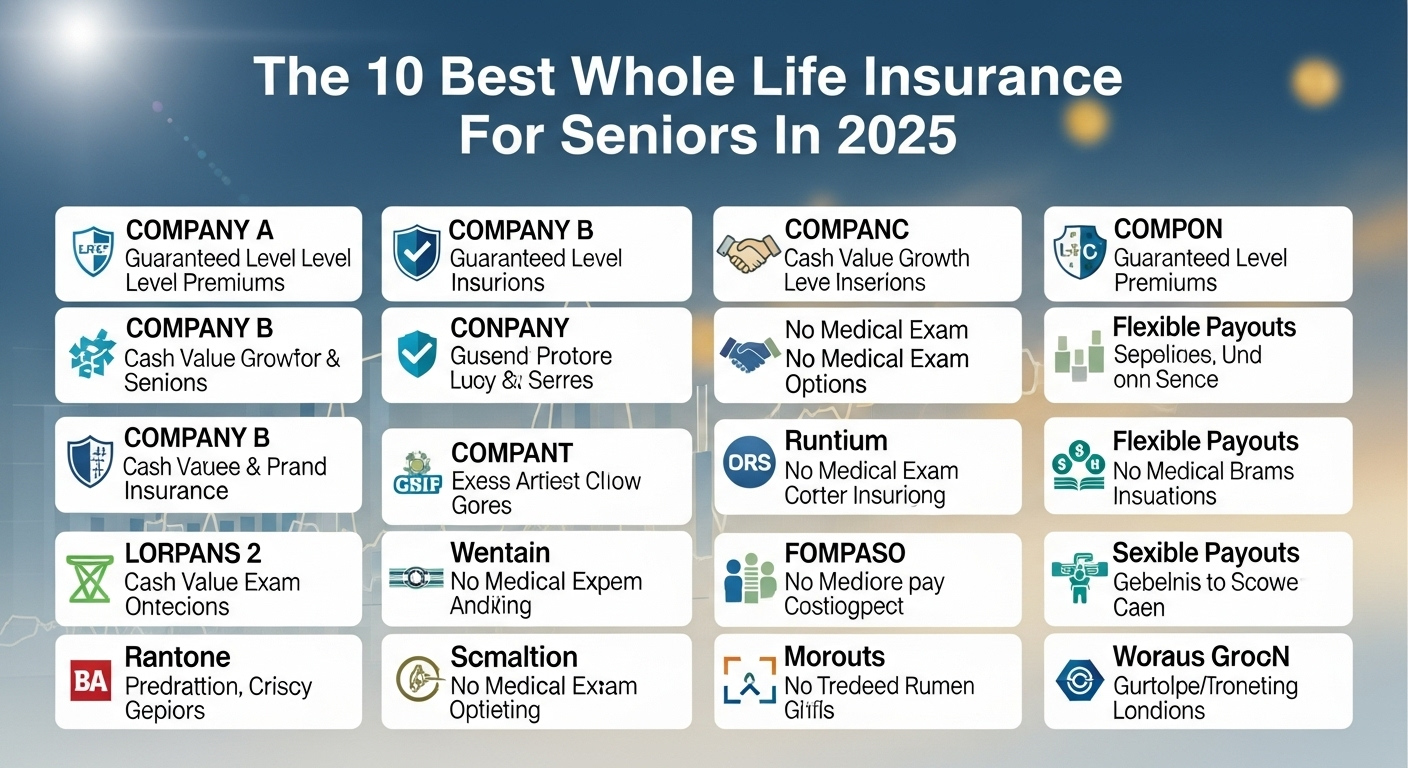
Introduction to Insurance Needs at 40
At the age of 40, individuals often find themselves at a significant crossroads, both personally and professionally. This unique stage of life typically brings about various transitions that can greatly influence their insurance needs. It is not uncommon for individuals to experience career advancements, increase their family obligations, or face advancing health concerns. As such, reevaluating existing insurance plans becomes vital to ensure that coverage remains adequate and tailored to these new circumstances.
One major factor to consider around this age is the potential expansion of family responsibilities. Many individuals at 40 may have children who are growing older or might be planning for future educational expenses. This situation often necessitates examining life insurance policies to ensure adequate coverage that secures the financial future of dependents. Increasing life insurance coverage might be essential to protect against unforeseen circumstances and provide peace of mind.
Moreover, individuals in this age bracket are typically more established in their careers but may also face new challenges or opportunities. Career advancements can lead to increased income, which might alter insurance needs with regard to health coverage, disability insurance, or even long-term care insurance. It’s crucial for individuals to assess their current health insurance plans and consider upgraded options that accommodate enhanced medical needs, preventive care services, and family health requirements.
Additionally, as one ages, health considerations inevitably become more prominent. Regular health screenings and potential medical conditions require individuals to assess their health insurance policies carefully. They may need to switch to plans offering better coverage for specialists, prescriptions, and urgent care services. This proactive approach can significantly mitigate potential financial burdens stemming from health issues.
In conclusion, the age of 40 is a pivotal time, marked by substantial life changes that warrant a careful reevaluation of insurance policies. It is essential for individuals in this bracket to adapt their insurance coverage to effectively address their evolving needs and ensure long-term security and well-being.
Types of Insurance to Consider
As individuals reach the age of 40, it becomes increasingly essential to reassess their insurance needs to ensure adequate coverage for various life circumstances. At this stage of life, there are several types of insurance that should be carefully considered. These include health insurance, life insurance, disability insurance, and property insurance—each serving a unique purpose in financial and personal security.
Health insurance is crucial for individuals at this age, as the risk of health issues tends to increase. Having comprehensive health coverage can alleviate the financial burden associated with medical expenses, including hospital visits, surgeries, and preventive care. It is advisable to explore options that not only cover routine care but also more extensive healthcare needs that may arise over time.
Life insurance is another significant policy to consider. By securing life insurance, individuals can provide financial protection for their dependents in the event of premature death. This type of insurance ensures that loved ones are not left with financial hardships and can help cover daily living expenses, debts, and education costs. Evaluating whether to choose term or whole life insurance based on personal and family needs is essential.
Disability insurance is often overlooked but is vital for safeguarding against the unforeseen circumstances that could impede one’s ability to work. This type of insurance provides income replacement if an individual becomes disabled and unable to perform their job. Considering the potential impact on financial stability, having a robust disability insurance policy is a wise decision at this age.
Lastly, property insurance, which includes homeowners and renters insurance, is equally important. Protecting personal belongings against theft, damage, or disasters ensures that individuals are not left to bear significant losses alone. Reviewing and updating property insurance can help accommodate changes in property value and personal assets.
Evaluating Health Insurance Options
As individuals reach the age of 40, evaluating health insurance options becomes increasingly crucial. At this stage, personal health needs and family situations may change, leading to different insurance considerations. A comprehensive assessment involves several key factors including coverage, premiums, deductibles, and out-of-pocket costs. These elements should be analyzed carefully to determine the most suitable plan.
Firstly, coverage is paramount. It is essential to review what each plan offers in terms of medical services, preventive care, and specialist visits. An insurance plan that includes comprehensive coverage for routine check-ups and necessary treatments can significantly benefit one’s health over time. Analyzing benefits such as mental health services or chronic disease management is particularly relevant for individuals in this age bracket, as these factors can directly impact long-term well-being.
Secondly, premiums are another vital consideration. It is important to evaluate how much one can afford to pay on a monthly basis. A balance must be struck between controlling premium costs and ensuring adequate coverage. For some, a higher premium may be justified by lower deductibles and out-of-pocket expenses, while others may prefer a lower premium and higher risk, depending on their health and lifestyle. Evaluating overall cost-effectiveness of different plans is a critical step in the decision-making process.
Deductibles and out-of-pocket costs play a significant role in the financial aspect of health insurance. Individuals should verify the amount they are willing to pay before their insurance fully kicks in. This is essential for planning future healthcare expenses and for ensuring that unexpected medical needs do not become financially burdensome. Comparing these costs across various plans can shed light on the most economically viable options.
In conclusion, evaluating health insurance options at age 40 requires careful consideration of coverage, premiums, deductibles, and out-of-pocket expenses. By analyzing these factors, individuals can choose a health insurance plan that aligns with their personal health needs and family situations, paving the way for informed decision-making regarding their healthcare.
The Importance of Life Insurance
As individuals reach the milestone of 40 years, the significance of securing life insurance becomes increasingly evident. Life insurance serves as a crucial safety net not only for policyholders but also for their dependents. At this stage in life, many are often juggling responsibilities such as raising children, supporting aging parents, and maintaining a mortgage. Thus, the financial protection afforded by life insurance can offer peace of mind, knowing that loved ones will be safeguarded in the event of the policyholder’s untimely demise.
One of the primary reasons for obtaining life insurance at this age is to ensure financial security for dependents. Should a policyholder pass away unexpectedly, life insurance can provide vital funds to cover everyday expenses, education costs, and other financial obligations. This assurance helps families maintain their standard of living and prevents them from experiencing undue financial hardship during a trying time. It’s about enabling loved ones to navigate a future without the deceased while minimizing the risks associated with sudden loss.
Moreover, life insurance plays a critical role in managing existing debts. For individuals in their 40s, student loans, mortgages, and credit card debts can accumulate, and the burden of these debts can fall heavily on family members if the primary earner is no longer alive. With a life insurance policy in place, funds can be allocated to settle these outstanding obligations, ensuring that dependents are not left with financial burdens to shoulder on their own.
Additionally, as individuals consider their legacy, life insurance can play an integral part in estate planning. Whole life insurance policies often provide cash value components that can contribute to long-term financial strategies. Thus, by selecting the right type of life insurance, whether term or whole life, individuals at age 40 can effectively integrate it into their broader financial plan, ensuring both immediate protection and long-term benefits for themselves and their loved ones.
Disability Insurance: A Safety Net
Disability insurance serves as a crucial safety net for individuals, particularly those in their 40s, a decade often marked by significant career advancements and financial responsibilities. As one navigates the complexities of life, the unpredictability of health issues or accidents can pose a genuine threat to one’s ability to work. Disability insurance provides income protection, ensuring that even in the face of unforeseen circumstances, individuals can maintain financial stability and continue to support themselves and their families. This type of coverage is essential, as it allows a person to recover without fear of financial ruin.
Many individuals in their 40s underestimate the possibility of encountering a severe illness or injury that could temporarily or permanently impact their ability to work. Thus, securing an appropriate disability policy helps mitigate these risks, allowing for greater peace of mind. When exploring different disability insurance options, it is vital to assess several factors to find the most suitable policy. For instance, it is important to consider the elimination period—the time one must wait before benefits kick in—along with the duration of the benefits and how much of one’s income is protected. The level of coverage needed varies depending on personal and financial circumstances.
Furthermore, prospective policyholders should also pay attention to definitions within the policy regarding ‘disability.’ Some policies may offer coverage for total disability only, while others might also cover partial disability. Individuals should also evaluate potential riders or additional features that can enhance their coverage, such as cost-of-living adjustments or future purchase options, to ensure long-term adaptability to their evolving financial needs. By taking the time to thoroughly research and understand the intricacies of disability insurance, individuals can safeguard their income and secure peace of mind in the event of the unexpected.
Planning for Property and Casualty Insurance
As individuals reach the age of 40, it becomes increasingly pertinent to assess their property and casualty insurance needs. This form of insurance primarily includes homeowners and renters insurance, both designed to protect personal assets against unforeseen events. At this stage in life, many experience significant changes, such as acquiring a home, enhancing asset portfolios, or even adjusting family dynamics, highlighting the necessity for thorough insurance planning.
One crucial consideration is the evaluation of personal assets. Individuals in their 40s are typically more established in their careers, leading to increased wealth accumulation. This reality necessitates a comprehensive review of property value, including real estate, vehicles, and valuable personal belongings. Proper coverage guarantees that in the event of loss or damage, individuals are not left financially vulnerable. Various options exist within property insurance plans, ensuring that each asset can be adequately protected according to its specific risk factors.
Liability coverage is another vital aspect of property and casualty insurance that is often overlooked. As responsibilities increase, so too does the likelihood of unexpected incidents occurring within a personal or rental property. Liability coverage can protect individuals against claims resulting from injuries or damage to someone else’s property, which can happen more frequently as families grow or if one entertains guests. In addition, significant life changes, such as marriage or divorce, may necessitate a reevaluation of insurance coverage levels. For instance, merging households may require adjusting existing policies to ensure complete protection whilst also possibly benefitting from bundled discounts.
In conclusion, individuals at age 40 should prioritize property and casualty insurance as a central component of their financial strategy. By assessing personal assets, understanding liability coverage, and adapting policies to life changes, they can ensure robust protection against the uncertainties of life.
Assessing Financial Situations for Insurance Decisions
To make informed choices regarding insurance policies, it is essential for individuals at age 40 to thoroughly assess their financial situations. This evaluation process begins with understanding one’s net worth, which encompasses all assets and liabilities. By calculating net worth, individuals can gain a clear picture of their financial health. This figure serves as a foundation for determining how much can be allocated toward insurance premiums without compromising other financial responsibilities.
Equally important is evaluating income stability. Individuals should consider not only their current earnings but also the sustainability of that income source. It is advisable to assess job security, career trajectory, and any supplemental income streams. A stable income plays a critical role in guaranteeing the ability to maintain regular insurance payments. Furthermore, it can influence the types of coverage necessary; for example, individuals in more volatile job sectors may gravitate towards policies that provide greater financial security in the event of an unforeseen loss.
Savings also constitute a vital component of the assessment process. Individuals should review their emergency funds and retirement accounts to ensure they are adequately prepared for the future. This includes evaluating whether current savings are sufficient to cover potential out-of-pocket expenses related to medical emergencies or property damage. Such proactive measures not only safeguard current finances but also align insurance choices with long-term financial goals.
Alignment of insurance decisions with overarching financial objectives is crucial. Whether it is life, health, or property insurance, understanding how these policies fit into long-term plans helps prioritize needs effectively. Therefore, conducting a thorough assessment of net worth, income stability, and savings can empower individuals to make strategic insurance decisions that reflect their current and future financial landscape.
Common Mistakes to Avoid
When individuals reach the milestone age of 40, selecting the right insurance can be a complex but essential process. As people navigate through this critical phase, they often fall into several common pitfalls that can adversely affect their insurance coverage and financial stability. Understanding these mistakes is the first step toward making informed decisions.
One prevalent error is underinsuring or overinsuring. Many individuals may underestimate their insurance needs, leading to insufficient coverage that fails to protect them in times of crisis. On the other hand, overinsuring can result in unnecessary financial strain due to excessive premiums without a corresponding increase in protection. It is crucial to assess both current risks and future needs to strike the right balance in coverage.
Another frequent mistake is neglecting to review existing policies regularly. Life circumstances, such as marriage, children, or changes in employment, can significantly impact insurance needs. Individuals often make the mistake of setting their policies and forgetting about them. A yearly review of their insurance can help ensure that it is aligned with their current life situation and financial goals.
Moreover, failing to consider the impact of lifestyle changes is another common error. For instance, changes in health status, job conditions, or even relocation can alter coverage needs. Ignoring these aspects can lead to inadequate protection or higher premiums than necessary. It is essential for individuals to proactively reassess their insurance needs as their lives evolve.
In conclusion, avoiding these common mistakes when selecting insurance at age 40 can help secure adequate coverage while ensuring financial wellness. By understanding the importance of proper coverage, regular reviews, and adapting to life changes, individuals can make more informed and effective decisions regarding their insurance needs.
Tips for Finding the Right Insurance Policy
Finding the best insurance policy at the age of 40 is a significant decision, and careful consideration is necessary to ensure appropriate coverage tailored to individual needs. One effective strategy is to seek professional guidance from a knowledgeable insurance advisor. These experts can provide valuable insights into various types of policies, helping you navigate complex options and identifying those that best fit your financial and personal situation.
Moreover, it is advisable to compare multiple quotes from various insurance providers. Each company may offer different coverage limits, premiums, and policy benefits. By obtaining and reviewing several quotes, you can evaluate the options available and ensure you are getting competitive rates. Online comparison tools may also assist in this process by simplifying your search and presenting side-by-side evaluations of different policies.
Understanding the terms of each policy is essential as well. Familiarize yourself with the specifics of coverage options, deductibles, and exclusions. Reading the fine print can reveal important details that influence your choices as well as the overall cost of the policy. It is crucial to differentiate between necessary coverage and optional add-ons, as this will enable you to tailor the plan to match your actual needs rather than unnecessary expenses.
Asking questions is another pivotal aspect when selecting an insurance policy. If any part of the policy documentation is unclear or if you need further clarification on coverage options, do not hesitate to reach out to the insurance provider. Being informed will help you make confident decisions, ensuring your choice of insurance aligns perfectly with your lifestyle and future goals. This proactive approach empowers you to select the right insurance policy that not only meets your expectations but also protects your interests effectively.





